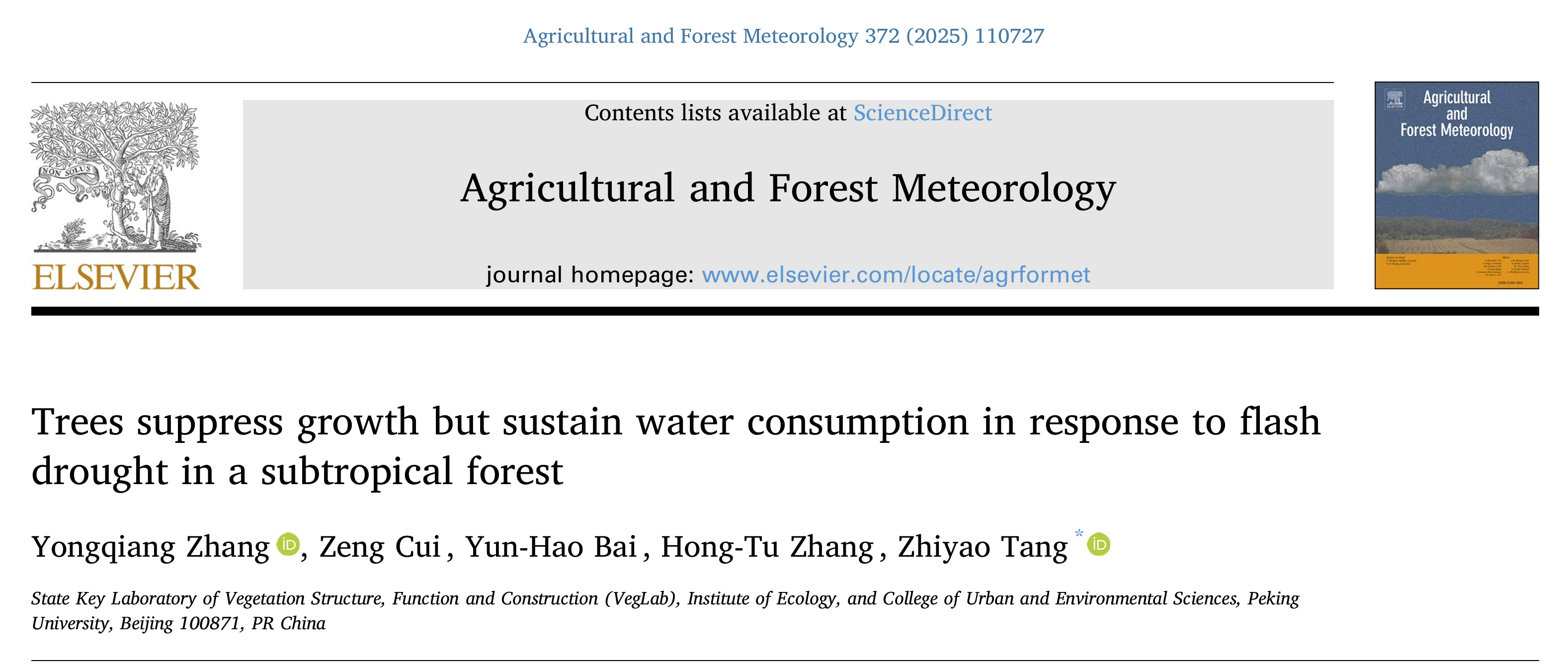Flash droughts, characterized by the rapid onset of soil moisture deficits combined with anomalously high temperatures over a short period, have caused significant damage and pose a new challenge for predicting their impacts on trees. To elucidate the response of trees to flash drought, we conducted high-frequency monitoring of the tree growth, water deficit, and sap flow density from 12 common broad-leaved tree species in a subtropical forest. We found that trees suppress growth but sustain water consumption in response to flash droughts. Conservative evergreen species exhibited greater drought tolerance, while acquisitive deciduous species were more sensitive to drought and suffered greater damage. After the drought, the growth of evergreen trees nearly recovered to pre-drought levels, whereas that of deciduous trees declined continuously. Furthermore, climate and plant functional traits jointly regulated tree growth, while tree water deficit reduced growth. Notably, sap flow played a critical role in promoting growth during drought periods, whereas it was not associated with growth during non-drought periods. These findings underscore the importance of tree drought response strategies in mitigating the negative effects of drought. We highlight the dominance of climatic factors in shaping tree responses during non-drought periods and the regulatory role of plant functional traits during drought periods. Our findings may provide valuable insights for sustainable forest management and silvicultural practices in the face of climate variability and exacerbation of flash droughts.
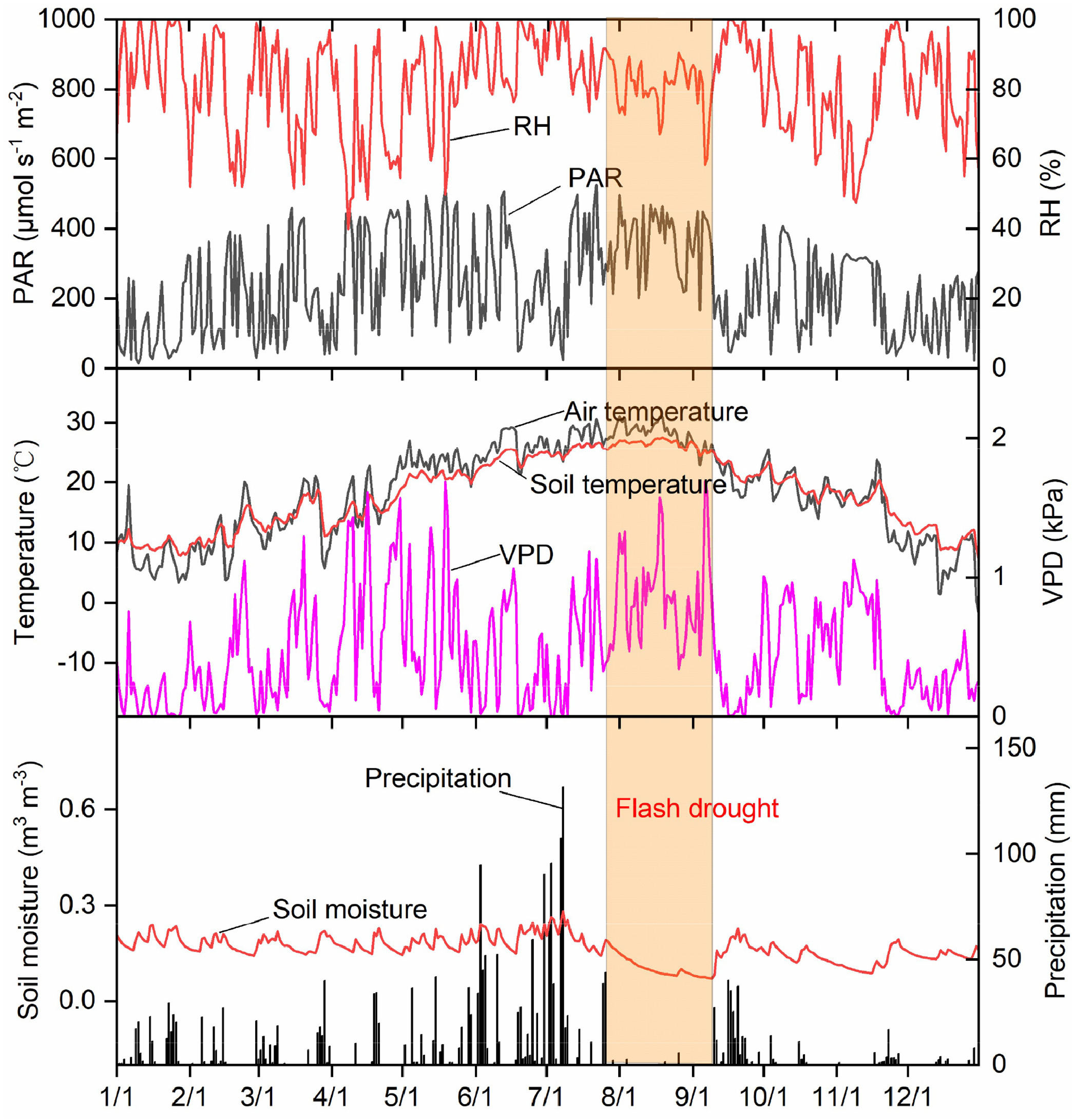
Figure 1. Variation of photosynthetically active radiation, relative humidity, air and soil temperature, Vapor pressure deficit, and soil moisture, precipitation, were collected or calculated at 30-minute intervals, synchronized with the collection times for the stem radius and SFD.
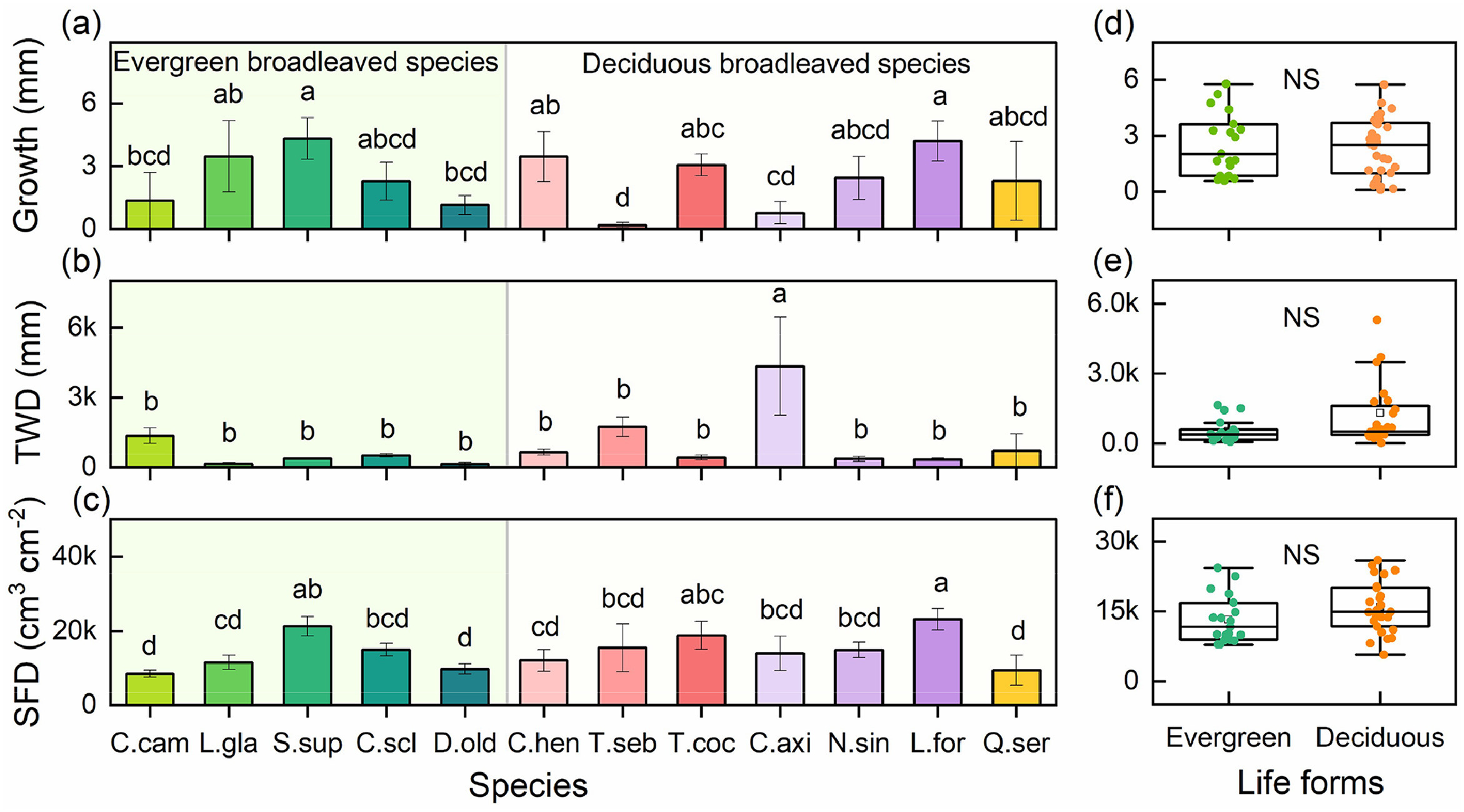
Figure 2. Annual mean tree growth, water deficit and sap flow density of different species and life forms.
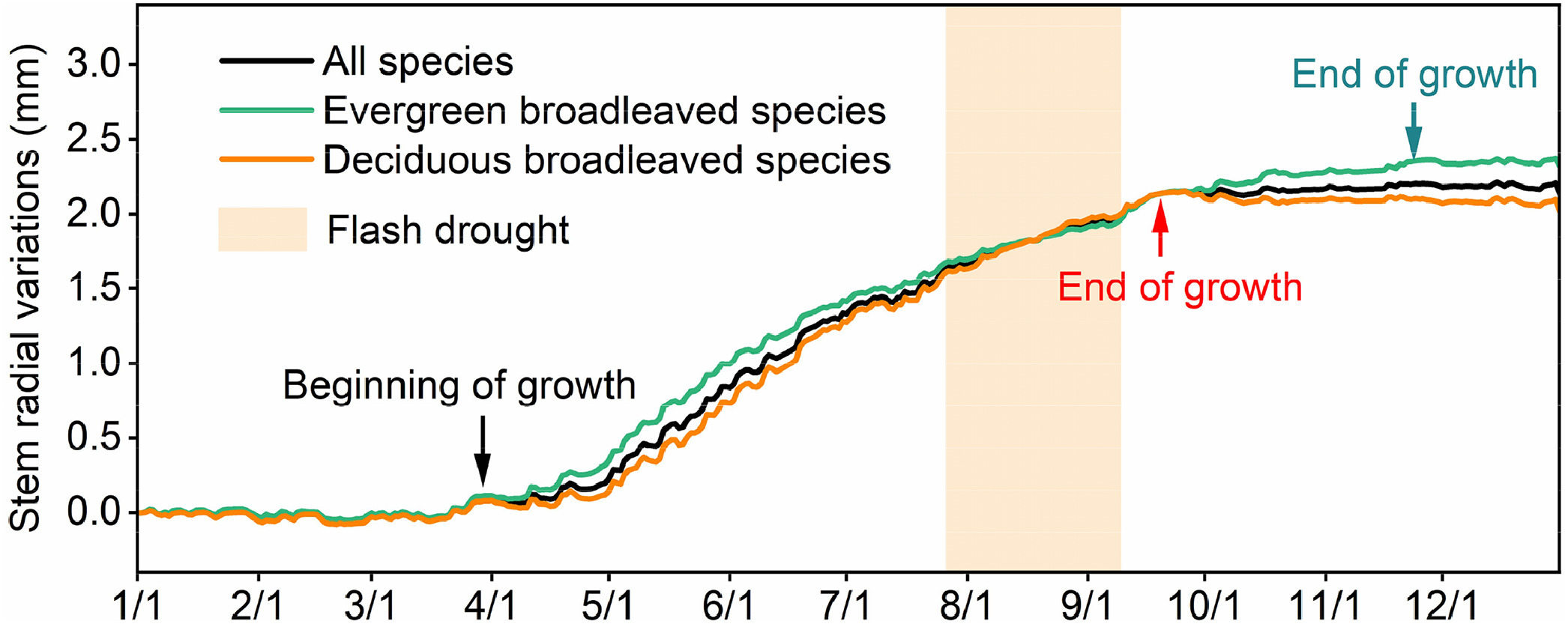
Figure 3. Normalized stem radial variations of different life forms, adjusted to start from zero to facilitate comparison.
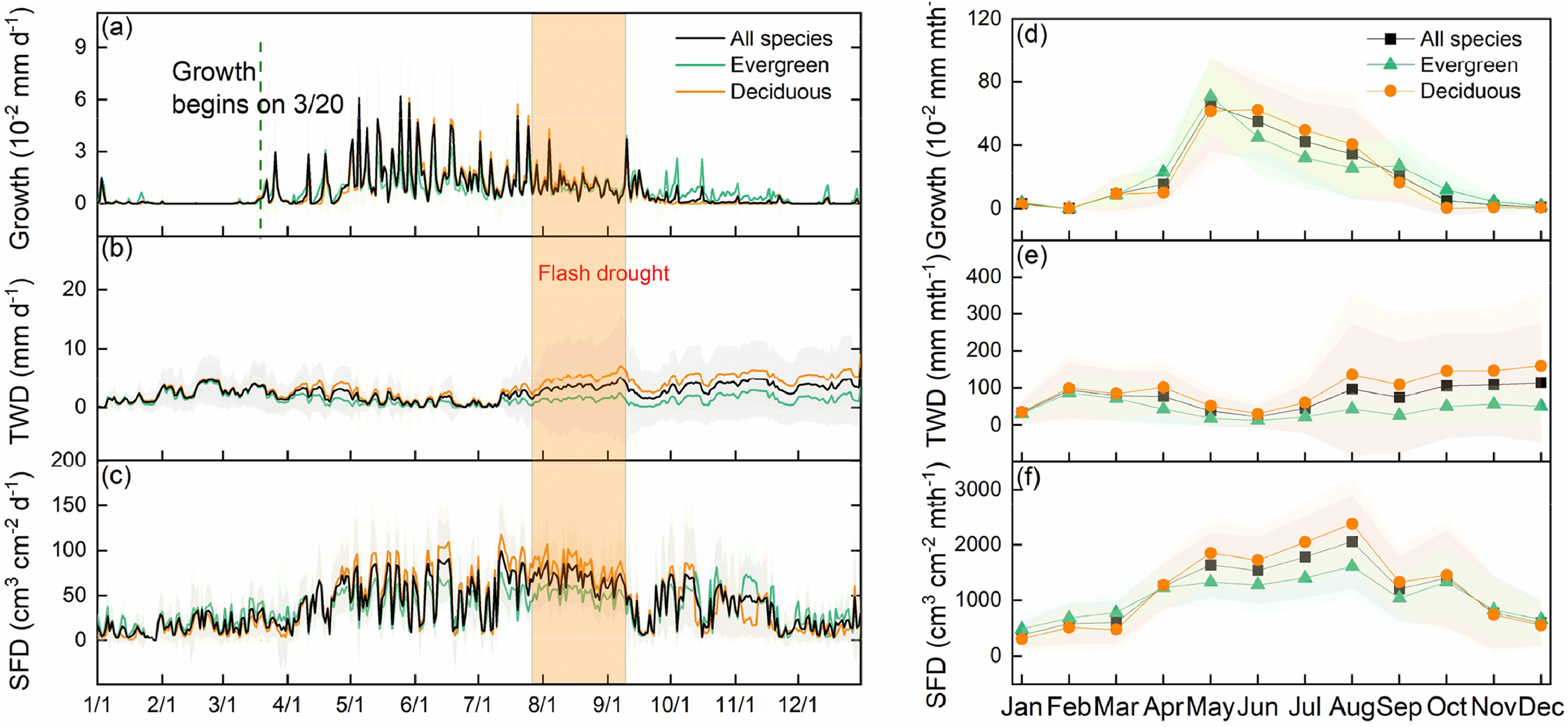
Figure 4. The daily (a ∼ c) and the monthly mean (d ∼ e) curves of tree growth, water deficit (TWD) and sap flow density (SFD) in 2020.
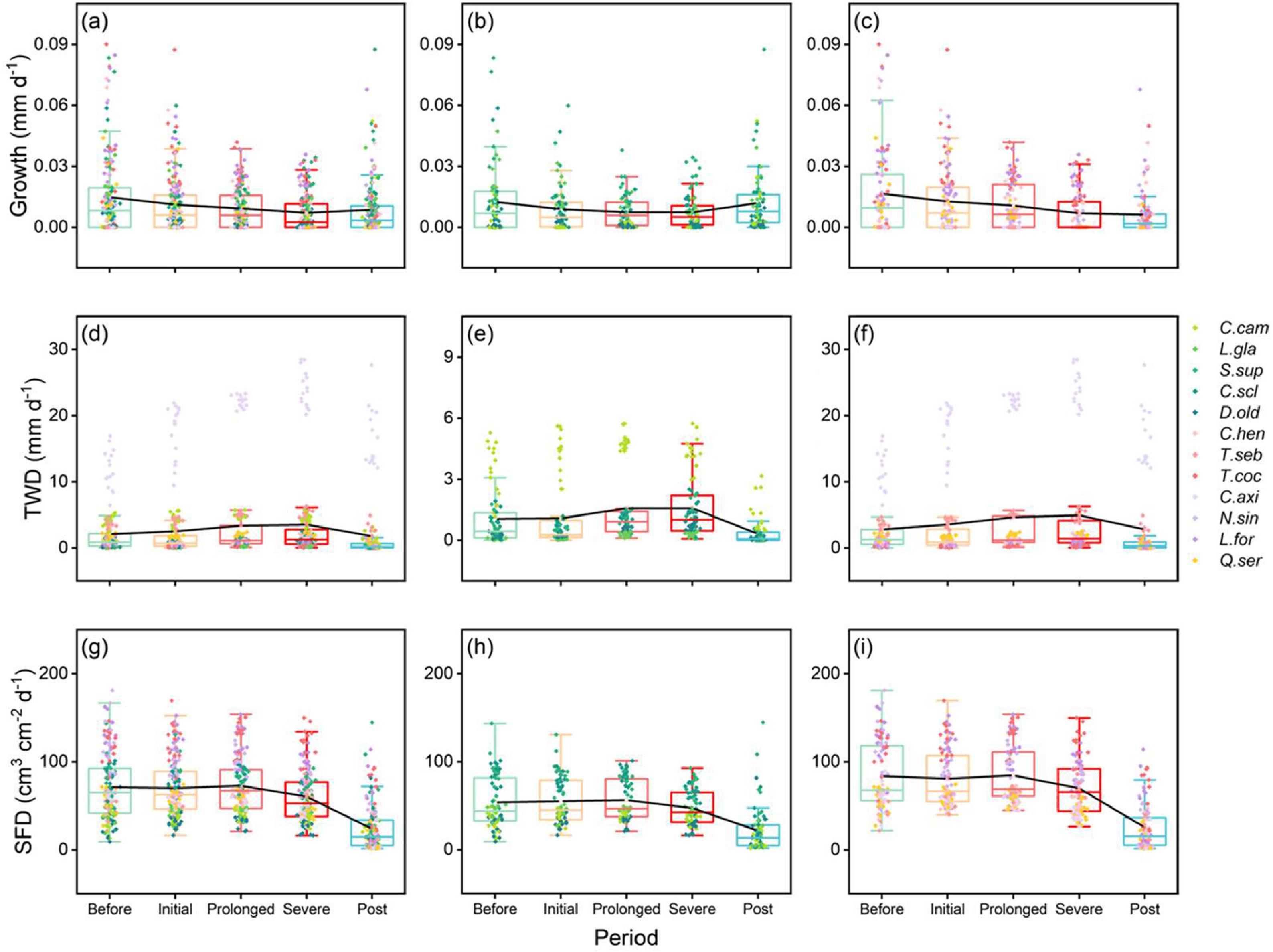
Figure 5. Daily mean tree growth (mm d-1), water deficit (TWD) and sap flow density (SFD) of different life forms in different drought periods.
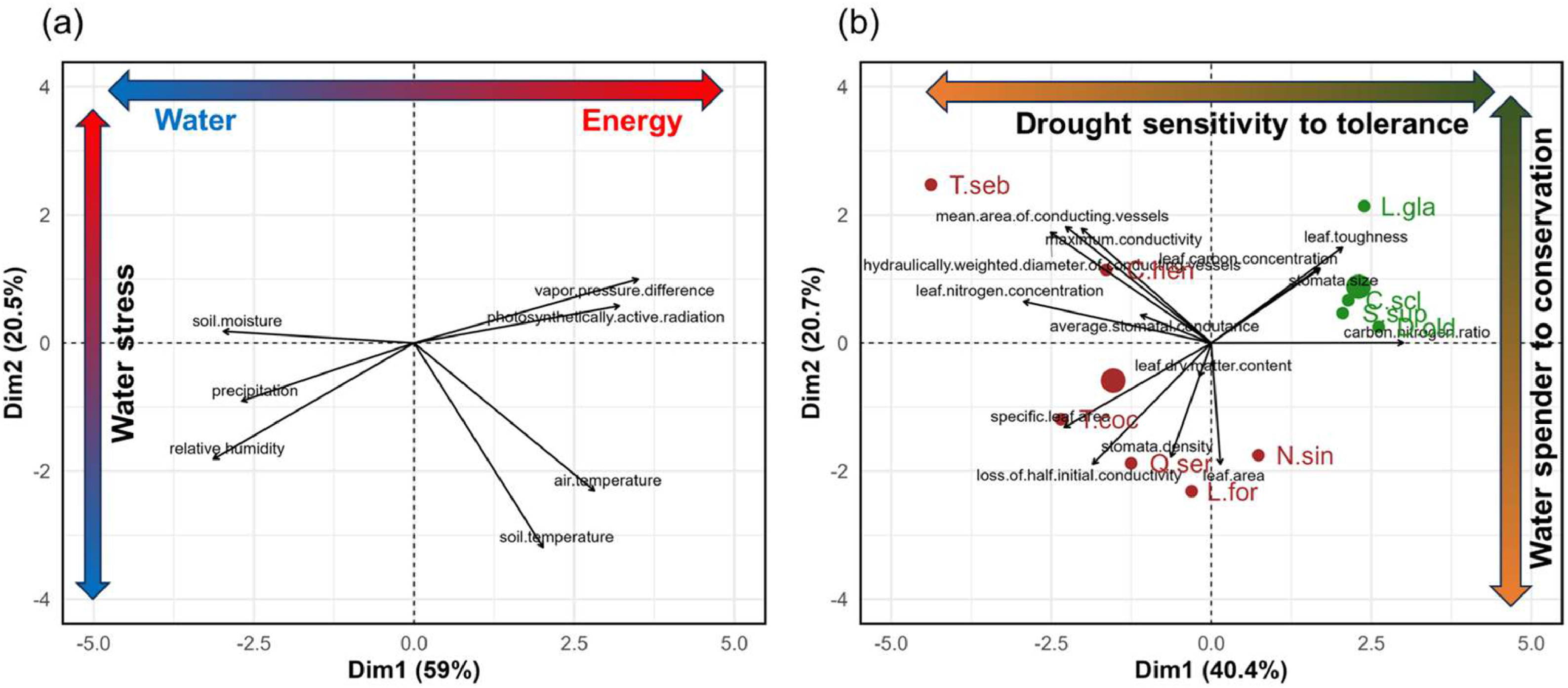
Figure 6. Plots of the principal components analysis (PCA) of (a) climate factors and (b) plant traits.
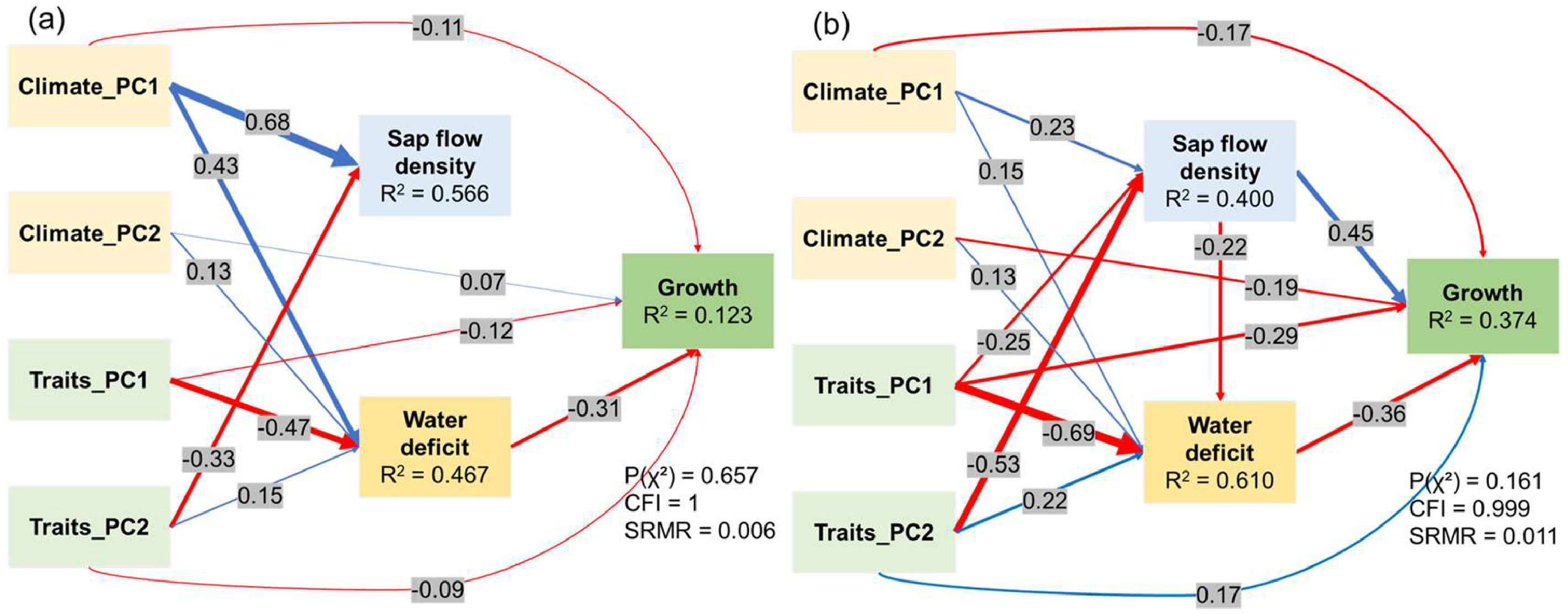
Figure 7. The structural equation models (SEM) for the relationships among tree growth, water deficit, sap flow, and climate and plant traits during the (a) non-drought period and (b) drought period.
Literature:
Yongqiang Zhang, Zeng Cui, Yun-Hao Bai, Hong-Tu Zhang, Zhiyao Tang*. 2025. Trees suppress growth but sustain water consumption in response to flash drought in a subtropical forest. Agricultural and Forest Meteorology. 372:110727. https://www.sciencedirect.com/science/article/pii/S0168192325003466?via%3Dihub.
